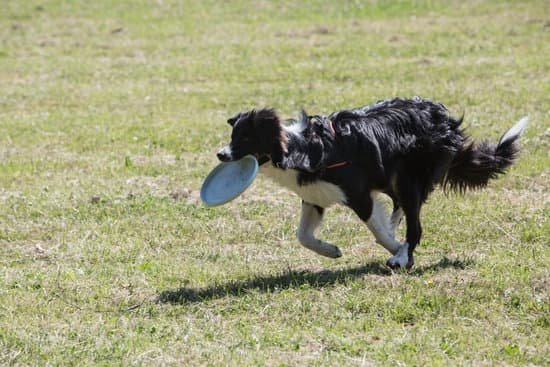Are you wondering how to train your dog to bark at strangers? It’s important to understand the significance of this training in ensuring your dog’s safety and your peace of mind.
Many pet owners overlook the importance of teaching their dogs to bark at strangers, but it can be a valuable skill that protects both your home and your family. In this article, we will delve into the essential steps for training your dog to bark at strangers effectively.
First and foremost, it’s crucial to recognize the signs that indicate your dog is uncomfortable or anxious around strangers. By understanding your dog’s behavior and body language, you can address any underlying issues and implement appropriate training methods. Additionally, establishing a consistent training routine is key to successfully teaching your dog to bark at strangers when necessary.
Furthermore, introducing controlled interactions with strangers and using positive reinforcement are essential components of this training process. By rewarding your dog for exhibiting the desired behavior, you can encourage them to bark at unfamiliar individuals in a variety of environments and situations.
It’s also important to address any unwanted behaviors that may arise during the training process and maintain consistent reinforcement over time. Stay tuned as we explore these topics in detail and provide practical tips for effectively training your dog to bark at strangers.
Identifying the Signs That Your Dog Is Not Comfortable With Strangers
Dogs are naturally protective animals, and training them to bark at strangers can be a valuable skill for keeping you and your home safe. However, before starting the training process, it’s important to understand whether your dog is uncomfortable or anxious around strangers. Here are some signs that indicate your dog is not comfortable with strangers:
1. Body Language: A tense posture, raised hair on the back, or baring of teeth are all indicators that your dog may feel threatened by a stranger’s presence.
2. Excessive Barking: While barking at strangers is a desired behavior in the training process, excessive and non-stop barking when confronted with a new person may indicate fear or discomfort.
3. Aggression: Growling, lunging, or snapping at strangers are clear signs that your dog feels threatened and is not comfortable with their presence.
It’s crucial to pay attention to these signs before beginning the training process. Pushing a dog too quickly into situations where they feel uncomfortable can lead to increased anxiety and aggression. Once you have identified these signs and established that your dog is not comfortable with strangers, you can then move on to establishing a training routine for your pet.
Establishing a Training Routine for Your Dog
When it comes to training your dog to bark at strangers, establishing a consistent training routine is essential for success. Here are some steps to help you create a training routine for your furry friend:
1. Set a regular schedule: Dogs thrive on routine, so set aside specific times each day for training sessions. This will help your dog understand when to expect training and be more receptive to learning.
2. Choose a quiet, distraction-free environment: Find a calm and quiet space where you can focus on the training without interruptions. This will help your dog stay focused and engaged during the sessions.
3. Use clear and consistent commands: Decide on a specific command for when you want your dog to bark at strangers, such as “alert” or “watch.” Use this command consistently during training sessions so that your dog learns to associate it with the desired behavior.
4. Keep training sessions short and fun: Dogs have short attention spans, so keep the training sessions brief, around 10-15 minutes at a time. Make the sessions enjoyable by using treats, toys, or praise as positive reinforcement.
5. Monitor progress and adjust the routine as needed: Pay attention to your dog’s response during training and make adjustments to the routine if necessary. Every dog is different, so be patient and flexible in finding what works best for your furry companion.
By following these steps and establishing a solid training routine, you can set the stage for successfully teaching your dog to bark at strangers in a controlled and positive manner. Remember that patience, consistency, and positive reinforcement are key elements in effective dog training.
Introducing Your Dog to Controlled Stranger Interactions
When training your dog to bark at strangers, it is important to introduce them to controlled stranger interactions. This step allows your dog to gradually become more comfortable with encountering unfamiliar individuals while also reinforcing the behavior you want them to exhibit.
Start With Familiar Faces
Begin by exposing your dog to people they already know but may not have seen in a while. Have these familiar individuals approach your dog in a calm and non-threatening manner. Encourage your dog’s response by using verbal cues or commands that signal it is okay to bark at these known individuals.
Gradually Introduce Unfamiliar People
As your dog becomes more accustomed to barking at familiar faces, you can then move on to introducing them to new strangers. Start with one new person at a time and ensure that they are aware of the training process, so they can act accordingly. Allow your dog to approach and interact with the new person while observing their response.
Monitor Your Dog’s Comfort Level
Pay close attention to your dog’s body language and behavior during these controlled interactions. Look for signs of discomfort or stress, such as cowering, excessive barking, or aggressive behavior. If these signs are present, take a step back in the training process and work on building your dog’s confidence before continuing with stranger interactions.
By carefully introducing your dog to controlled stranger interactions, you can effectively train them to bark at strangers while ensuring their overall comfort and well-being throughout the training process.
Using Positive Reinforcement and Rewards to Encourage Barking at Strangers
Understanding Positive Reinforcement
Positive reinforcement is a powerful tool in dog training, as it involves rewarding your dog for exhibiting the desired behavior. When it comes to teaching your dog to bark at strangers, positive reinforcement can be an effective way to encourage this behavior. By rewarding your dog with treats, praise, or toys when they bark at strangers, you are reinforcing the idea that barking in these situations is a good thing.
Choosing the Right Rewards
When using positive reinforcement to encourage barking at strangers, it’s important to choose the right rewards for your dog. Every dog is different, so it’s essential to find out what motivates your specific pet. For some dogs, treats may be the best reward, while others may respond better to verbal praise or playtime with a favorite toy. Experiment with different rewards to find what works best for your dog.
Reinforcing the Behavior
Consistency is key when using positive reinforcement to encourage barking at strangers. It’s crucial to reinforce the behavior every time your dog barks at a stranger, especially in the early stages of training. This will help your dog understand that their barking is directly linked to receiving a reward, making them more likely to continue this behavior in the future.
By understanding how positive reinforcement works and choosing the right rewards for your dog, you can effectively encourage them to bark at strangers in a controlled and positive way. Remember that patience and consistency are essential when using this method of training, and always be sure to monitor your dog’s comfort level throughout the process.
Correcting Unwanted Behaviors in the Barking Training Process
When training your dog to bark at strangers, it is important to address any unwanted behaviors that may arise during the training process. Some common unwanted behaviors include excessive barking, aggressiveness towards strangers, or fearfulness. These behaviors can be counterproductive to the training and may even create unsafe situations for both your dog and strangers.
To correct these unwanted behaviors, it is essential to first understand the underlying cause. Excessive barking can be a result of fear or anxiety, while aggressiveness towards strangers can stem from a territorial instinct. By identifying the root cause of the behavior, you can tailor your correction approach accordingly.
One effective method for correcting unwanted behaviors is through positive reinforcement and redirection. Rather than punishing your dog for exhibiting unwanted behaviors, focus on rewarding and reinforcing the desired behavior of controlled barking at strangers. Additionally, redirecting your dog’s attention away from the trigger that causes the unwanted behavior can help prevent further reinforcement of that behavior.
It’s important to seek professional guidance if you encounter persistent or severe unwanted behaviors during the barking training process. A certified dog trainer or behaviorist can provide personalized strategies and support to address these challenges effectively. Consistency and patience are key when correcting unwanted behaviors in your dog’s barking training journey. With time and dedication, you can help your furry companion become more confident and controlled in their interactions with strangers.
| Unwanted Behavior | Correction Approach |
|---|---|
| Excessive barking | Positive reinforcement and redirection |
| Aggressiveness towards strangers | Understanding root cause and seeking professional guidance if needed |
| Fearfulness | Positive reinforcement, patience, and consistency |
Practicing Barking at Strangers in Different Environments and Situations
Once your dog has shown progress in barking at strangers in controlled environments, it’s important to practice this behavior in various settings. This will help your dog generalize the behavior and understand that they should bark at strangers regardless of the location or situation.
Take your dog to different places such as parks, sidewalks, or outdoor events where they can encounter unfamiliar individuals. Additionally, consider practicing during different times of day to expose your dog to a variety of scenarios.
It’s crucial to maintain a calm and assertive demeanor when practicing with your dog in different environments. Dogs are very perceptive to their owner’s energy, so if you appear anxious or hesitant, it can affect their behavior.
Always remain composed and provide clear cues for when it’s appropriate for them to bark at strangers. Consistency is key during this phase of training, as it reinforces the learned behavior and ensures that your dog understands the command regardless of the setting.
As you introduce your dog to new environments and situations, closely monitor their reactions and provide positive reinforcement when they successfully bark at strangers. If you notice any signs of discomfort or anxiety in your dog, take a step back and provide reassurance before continuing with the training. Remember that every dog learns at their own pace, so be patient and continue to support them as they adapt to different environments while barking at strangers.
| Training Environment | Insights |
|---|---|
| Park | Expose your dog to new sights, sounds, and smells while practicing barking at strangers. |
| Sidewalk | Train your dog in an urban setting where encounters with strangers are common. |
| Outdoor Events | Provide opportunities for controlled interactions with unfamiliar individuals while surrounded by crowds. |
Maintaining Consistent Training and Reinforcing the Behavior Over Time
In conclusion, training your dog to bark at strangers can be a valuable skill to ensure their safety and the security of your home. By understanding the importance of this training and recognizing signs that your dog is uncomfortable with strangers, you can take proactive steps to address any issues. Establishing a consistent training routine and introducing controlled interactions with strangers are crucial in the process.
Using positive reinforcement and rewards to encourage barking at strangers can make the training process more effective and enjoyable for your dog. However, it’s also important to correct any unwanted behaviors that may arise during the training process. By practicing barking at strangers in different environments and situations, you can ensure that your dog is prepared to respond appropriately when encountering unfamiliar individuals.
Consistency is key when it comes to maintaining the behavior over time. By reinforcing the training on a regular basis, you can help solidify the behavior and ensure that your dog continues to bark at strangers when necessary. With patience, dedication, and ongoing reinforcement, you can successfully train your dog to bark at strangers in a positive and effective manner.
Frequently Asked Questions
How Do I Get My Dog to Bark Towards Strangers?
It’s important to carefully consider whether you actually want your dog to bark at strangers before trying to train this behavior. Dogs naturally have different temperaments, and not all dogs may be comfortable or suited for barking at strangers.
If you do decide to proceed, it’s best to start by socializing your dog with a variety of people in controlled settings, then using positive reinforcement to encourage barking at strangers in specific situations.
How Do I Teach My Dog to Bark at Intruders?
Teaching your dog to bark at intruders can be a complex process that requires careful training and potentially professional help. It’s essential to first establish what constitutes an “intruder” in your home and then use positive reinforcement techniques to encourage barking at these specific individuals while avoiding overreacting or responding excessively.
How Do I Train My Dog to Be Aggressive Towards Strangers?
Training a dog to be aggressive towards strangers is not recommended as it can pose significant risks both legally and ethically. Aggression should never be promoted as a desirable behavior in dogs, as it can lead to dangerous situations and legal liabilities.
It’s important to focus on positive behavioral training techniques that promote appropriate responses and good manners around people instead of fostering aggressive tendencies. If you are experiencing issues with aggressive behavior, seeking the guidance of a professional dog trainer or animal behaviorist is highly recommended.

Welcome to the blog! I am a professional dog trainer and have been working with dogs for many years. In this blog, I will be discussing various topics related to dog training, including tips, tricks, and advice. I hope you find this information helpful and informative. Thanks for reading!





